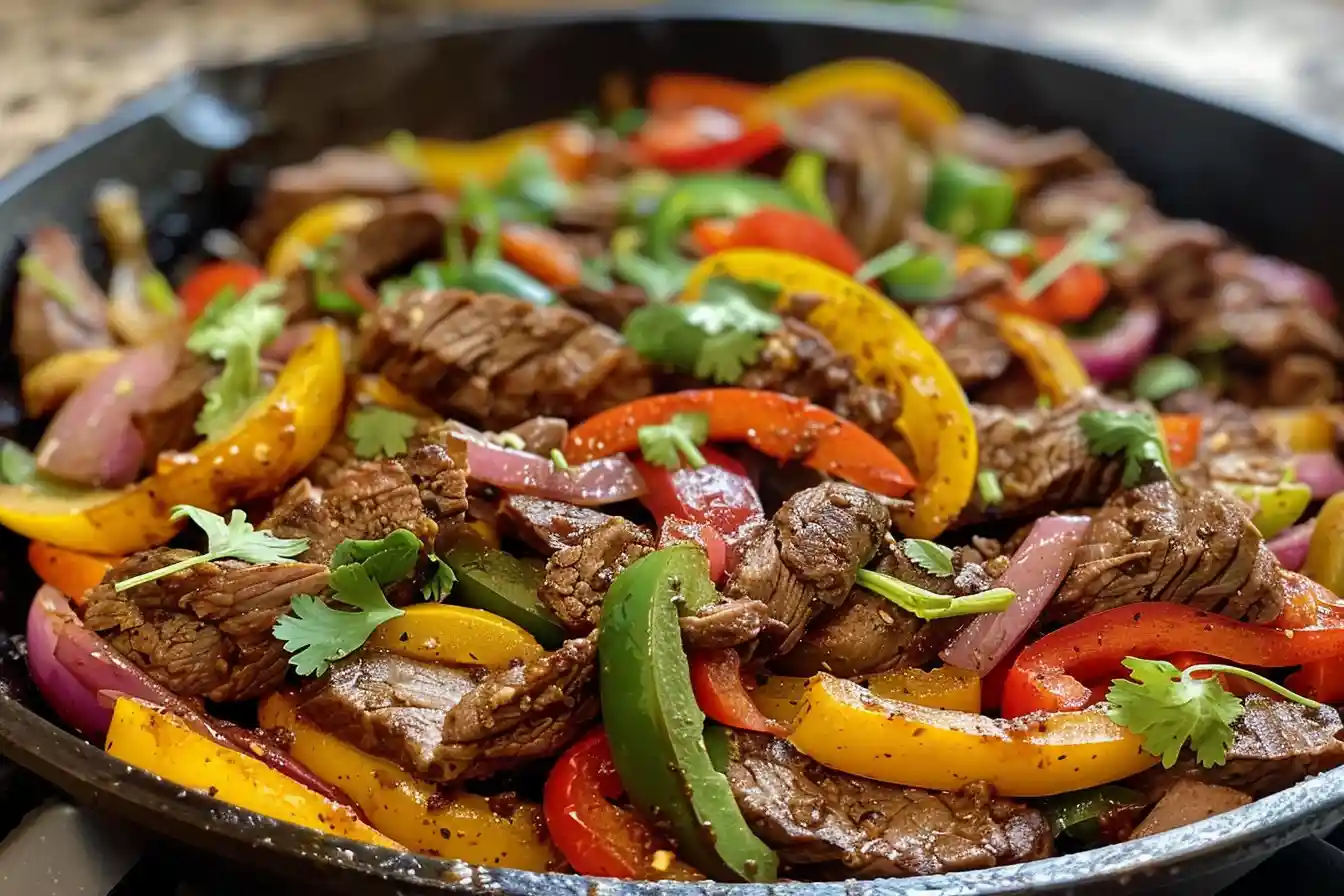When you’re in the kitchen and halfway through preparing your favorite lasagna, only to realize you’ve run out of ricotta cheese, you might find yourself wondering, Can you substitute cottage cheese for ricotta in recipes? The answer is not only a resounding yes, but also an opportunity to explore the unique flavors and textures that cottage cheese can bring to your dishes. In this detailed guide, we’ll delve into how you can make this substitution work, the best practices for doing so, and the possible variations that this swap can introduce into your culinary creations.
Understanding Ricotta Cheese
Before diving into whether cottage cheese can serve as a substitute for ricotta, it’s important to understand what makes ricotta such a beloved ingredient in many recipes. Ricotta cheese is a traditional Italian cheese made from the whey left over from the production of other cheeses.
This process gives ricotta its signature light, fluffy texture and mild flavor that is both slightly sweet and creamy. Ricotta is often used in both savory and sweet dishes, from lasagna and ravioli to cannoli and cheesecake.
The Composition and Flavor Profile of Cottage Cheese
Cottage cheese, on the other hand, is a fresh cheese curd product with a slightly tangy flavor. It is made from curdled milk and retains a creamy consistency, though it is lumpier than ricotta due to the curds.
Cottage cheese is also available in various fat levels, from full-fat to non-fat, and can be found in both large-curd and small-curd varieties. Its nutritional profile is rich in protein while being relatively low in fat, especially in its lower-fat versions.

Can You Substitute Cottage Cheese for Ricotta in Recipes?
The short answer is yes, you can substitute cottage cheese for ricotta in many recipes. However, the success of this substitution largely depends on the dish you’re preparing and the texture and flavor profile you desire. Cottage cheese can bring a slightly different taste and texture to your dishes, which can be either a positive or a negative, depending on your preferences.
Textural Considerations: What to Expect When Substituting
One of the primary differences between ricotta and cottage cheese is the texture. Ricotta is smooth and creamy, while cottage cheese is lumpier with noticeable curds. This textural difference means that, when you substitute cottage cheese for ricotta, your final dish may have a chunkier consistency. This can be particularly noticeable in dishes like lasagna or stuffed shells where the ricotta is meant to provide a smooth, creamy layer.
To mitigate this difference, you can blend cottage cheese in a food processor to achieve a smoother consistency before using it as a substitute. This step won’t completely replicate the texture of ricotta, but it will bring you closer to the creamy mouthfeel that ricotta provides.
Flavor Impact: The Tanginess Factor
Another key difference between ricotta and cottage cheese is the flavor. Ricotta has a mild, slightly sweet flavor, while cottage cheese tends to be tangier and saltier. This tanginess can alter the taste of your dish, especially in recipes where ricotta is a star ingredient, such as in desserts like cheesecake or cannoli.
If the tanginess of cottage cheese is a concern, you can balance it out by mixing the cottage cheese with a bit of cream or by using a small amount of sugar in sweet dishes. Additionally, choosing a cottage cheese with lower salt content can help bring it closer to the mild flavor of ricotta.
Substituting Cottage Cheese for Ricotta in Savory Dishes
When it comes to savory dishes, cottage cheese can often be used as a direct substitute for ricotta with minimal adjustment. Here’s how it works in some common recipes:
Lasagna
Lasagna is one of the most popular dishes where ricotta cheese is used, often layered between pasta and sauce. If you’re substituting cottage cheese for ricotta in lasagna, it’s a good idea to blend the cottage cheese first. This will create a smoother texture that more closely resembles ricotta. Additionally, mixing the blended cottage cheese with a beaten egg can help it set better during baking, preventing it from becoming too runny.
Stuffed Shells and Manicotti
These pasta dishes rely heavily on the creamy texture of ricotta to create a rich filling. As with lasagna, you can blend cottage cheese to achieve a smoother consistency. To enhance the flavor, consider adding some freshly grated Parmesan cheese, which will complement the tanginess of the cottage cheese and add depth to the filling.
Cannelloni
In cannelloni, ricotta is used to create a smooth, creamy filling for the pasta. Cottage cheese can be used as a substitute, but blending is crucial to achieve the right texture. The tanginess of cottage cheese can also be balanced with a bit of cream or by mixing it with some mascarpone cheese for an added richness.
Substituting Cottage Cheese for Ricotta in Sweet Dishes
Substituting cottage cheese for ricotta in sweet dishes requires more careful consideration, as the flavor and texture differences can be more noticeable.
Cheesecake
Cheesecake is a dessert where the creamy, smooth texture of ricotta is essential. While you can use cottage cheese as a substitute, it’s important to blend it thoroughly to achieve a creamy consistency. Additionally, the tanginess of cottage cheese may alter the flavor profile of the cheesecake. To mitigate this, consider adding extra sugar or vanilla extract to balance the tartness.
Cannoli
Cannoli is another classic dessert that relies on the smooth texture of ricotta. Substituting cottage cheese can work, but the filling may be less creamy and more tangy. Blending the cottage cheese and adding a touch of cream or mascarpone can help mimic the richness of ricotta. Also, incorporating additional flavorings like chocolate chips or citrus zest can help balance the tanginess.
Pancakes and Crepes
Ricotta pancakes and crepes are light, fluffy, and slightly sweet. When substituting cottage cheese, blending is again recommended to achieve a smoother texture. The tanginess of cottage cheese can actually complement the sweetness of the batter, creating a unique flavor profile that pairs well with fresh fruit or maple syrup.
Nutritional Comparison: Cottage Cheese vs. Ricotta
When considering substituting cottage cheese for ricotta, it’s worth examining the nutritional differences between the two. Cottage cheese is often lower in fat and calories than ricotta, making it a popular choice for those looking to reduce their fat intake. It’s also higher in protein, which can be beneficial for those aiming to increase their protein consumption.
However, cottage cheese can also be higher in sodium, particularly in the regular varieties. If you’re watching your sodium intake, it’s a good idea to opt for low-sodium cottage cheese or to rinse the curds before using them in your recipe.

Variations and Enhancements: Making the Most of Cottage Cheese
If you’re open to experimenting, cottage cheese can be more than just a substitute for ricotta, it can become a star ingredient in its own right. Here are some ways to enhance your dishes when using cottage cheese :
Herb and Garlic Cottage Cheese
For a savory twist, mix cottage cheese with fresh herbs like basil, parsley, or chives, and add minced garlic. This flavored cottage cheese can be used in place of ricotta in savory dishes, adding an extra layer of flavor to your lasagna, stuffed shells, or even as a spread for crostini.
Cottage Cheese and Honey Spread
In sweet dishes, try blending cottage cheese with honey and a dash of vanilla extract. This sweetened version can be used as a filling for crepes, pancakes, or even as a dip for fresh fruit. The combination of tangy cottage cheese and sweet honey creates a delightful contrast that can elevate your desserts.
Ricotta vs. Cottage Cheese in Traditional Dishes
When considering whether you can substitute cottage cheese for ricotta in traditional dishes, it’s helpful to look at the origins of these cheeses and how they’re traditionally used.
Ricotta is a staple in Italian cuisine, with a history that dates back to ancient Rome. It’s used in a wide variety of Italian dishes, both savory and sweet. In contrast, cottage cheese has roots in Eastern European cuisine, where it’s often eaten as a breakfast food or snack, either plain or mixed with fruits and vegetables.
While cottage cheese is not traditionally used in Italian dishes, its mild flavor and versatile texture make it a suitable substitute for ricotta in many cases. This substitution allows for a fusion of flavors and culinary traditions, bringing a unique twist to classic recipes.
Tips for Success: Ensuring the Best Results
To ensure the best results when substituting cottage cheese for ricotta, keep the following tips in mind:
- Blend for Texture: As mentioned earlier, blending cottage cheese can help create a smoother texture that more closely resembles ricotta. This is especially important in recipes where a creamy consistency is key.
- Adjust Seasoning: Because cottage cheese is tangier and saltier than ricotta, you may need to adjust the seasoning in your recipe. Taste the mixture before using it and adjust the salt, sugar, or other seasonings as needed.
- Consider Fat Content: If you’re using cottage cheese as a substitute for full-fat ricotta, consider using a higher-fat version of cottage cheese to achieve a similar richness. Conversely, if you’re looking to reduce fat, low-fat cottage cheese can be a healthier alternative.
- Experiment with Blends: Don’t be afraid to experiment by blending cottage cheese with other ingredients, such as mascarpone, cream cheese, or even Greek yogurt, to create a filling that’s closer to ricotta in both texture and flavor.
- Mind the Cooking Time: In baked dishes like lasagna or stuffed shells, cottage cheese may release more moisture than ricotta. To prevent a watery dish, consider draining the cottage cheese before using it or baking the dish for a few extra minutes to allow the excess moisture to evaporate.
Conclusion: Embracing the Versatility of Cottage Cheese
In conclusion, can you substitute cottage cheese for ricotta in recipes? Absolutely! Cottage cheese is a versatile and nutritious alternative that can be used in both savory and sweet dishes. While it has a different texture and flavor profile than ricotta, with a few adjustments, cottage cheese can successfully stand in for ricotta in most recipes. Whether you’re looking to make a healthier swap or simply experimenting with new ingredients, cottage cheese offers endless possibilities for culinary creativity.
So the next time you’re out of ricotta, don’t hesitate to reach for the cottage cheese and explore the delicious results it can bring to your cooking.





